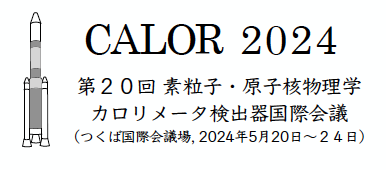Speaker
Description
Unprecedented precision is needed to address the Higgs physics with detectors at future e+e- colliders. Linear colliders (such as ILC and C^3) offer conditions, such as low duty cycles and low backgrounds, that can achieve these goals. The SiD Collaboration is developing an application of Monolithic Active Pixel Sensor (MAPS) technology for tracking and electromagnetic calorimetry (ECal). This technology offers high granularity, thin sensors, fast responses ($<$nsec), and small dead areas. The low collider duty cycle enables gaseous cooling for tracking and passive heat removal for calorimetry.
The first MAPS prototype (NAPA-p1), designed by SLAC in CMOS imaging 65 nm technology, is under test. Simulations predict a pixel jitter of <~400 ps-rms and an equivalent noise charge of 13 $e^{-}$rms with an average power consumption of 1.15 mW/cm$^2$ assuming 1\% duty cycle. The prototype is 1.5 × 1.5 mm$^2$, with a 25 $\mu$m pixel pitch. The long-term objective is a wafer-scale sensor of area $\sim$ 5 $\times$ 20 cm$^2$. Application of large area MAPS eliminates delicate and expensive bump-bonding, provides possibilities for better timing, and uses a CMOS foundry process.
Small pixels significantly improve shower separation in the ECal. Detailed simulation of ECal performance confirms previous results, indicating electromagnetic energy resolution based on digital hit cluster counting provides better performance than the 13 mm$^2$ pixels SiD TDR analog design. Furthermore, two particle separation in the ECal is excellent down to the millimeter scale. Geant4 simulation results with optimized analysis based on machine learning has been studied to optimize these expectations.
